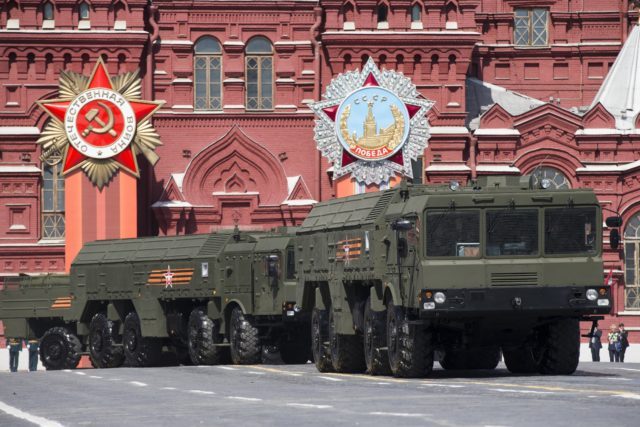WARSAW, Poland (AP) — Poland and Estonia expressed concerns Saturday that Russia has moved nuclear-capable Iskander ballistic missiles into Kaliningrad, a Russian region on the Baltic Sea, with one official saying Russia appears eager to dominate that body of water.
Russia, meanwhile, says the missiles are being deployed as part of regular military maneuvers to Kaliningrad.
The development comes amid heightened tensions between Russia and the West over Syria.
“It seems to me that this is yet another step in the general context of escalation that we see, at least in rhetoric,” said outgoing Estonian president Toomas Hendrik Ilves, according to Estonian broadcaster ERR.
Polish Defense Minister Antoni Macierewicz said Poland considers the matter of “highest concern” and is monitoring the situation.
The chief of staff of the Estonian Defense Forces, Lt. Gen. Riho Terras told ERR that he sees the move as part of a larger Russian attempt to dominate the Baltic Sea.
“In the long term, Russia’s wish is to bring the Baltic Sea and the passages leading to it more and more under its control, and to control it much like it does the Black Sea,” Terras said.
Wedged between NATO members Poland and Lithuania and the Baltic Sea, Kaliningrad is vital to Russia’s strategic position. Separated from the Russian mainland by 435 miles (700 kilometers), it is the westernmost part of Russia. It houses the Russian Baltic Fleet, as well as multiple land forces and an air force detachment with fighters, bombers and helicopters, as well as an early-warning radar system and other equipment.
The Iskander, which can be equipped with a conventional or a nuclear warhead, has a range of at least 500 kilometers (310 miles), placing most of Poland within its reach when it is in Kaliningrad.
Russian Defense Ministry spokesman Maj.-Gen. Igor Konashenkov played down the concerns.
“The Iskander ballistic missile system is mobile,” he said in a statement Saturday. “As part of the plan of combat training, missile troops are engaged in training on a year-round basis, covering great distances of the Russian territory in various ways: by air, by sea, and under their own power.”
He also said Russia used the deployment to figure out what range a U.S. spy satellite has.
“We exposed one Iskander before loading it on the Ambal (a cargo carrier) right under a U.S. reconnaissance satellite flying above in order to verify the parameters of that space apparatus. We did not have to wait too long (for results),” he said, without elaborating.
Other countries in the region are also nervous.
Finland and the United States signed a bilateral defense cooperation pact Friday pledging closer military collaboration at the time when the Nordic country is increasingly concerned over neighboring Russia’s activities in the Baltic Sea.
___
Heintz reported from Moscow. Jan M. Olsen in Copenhagen, Denmark, contributed to this report.

COMMENTS
Please let us know if you're having issues with commenting.